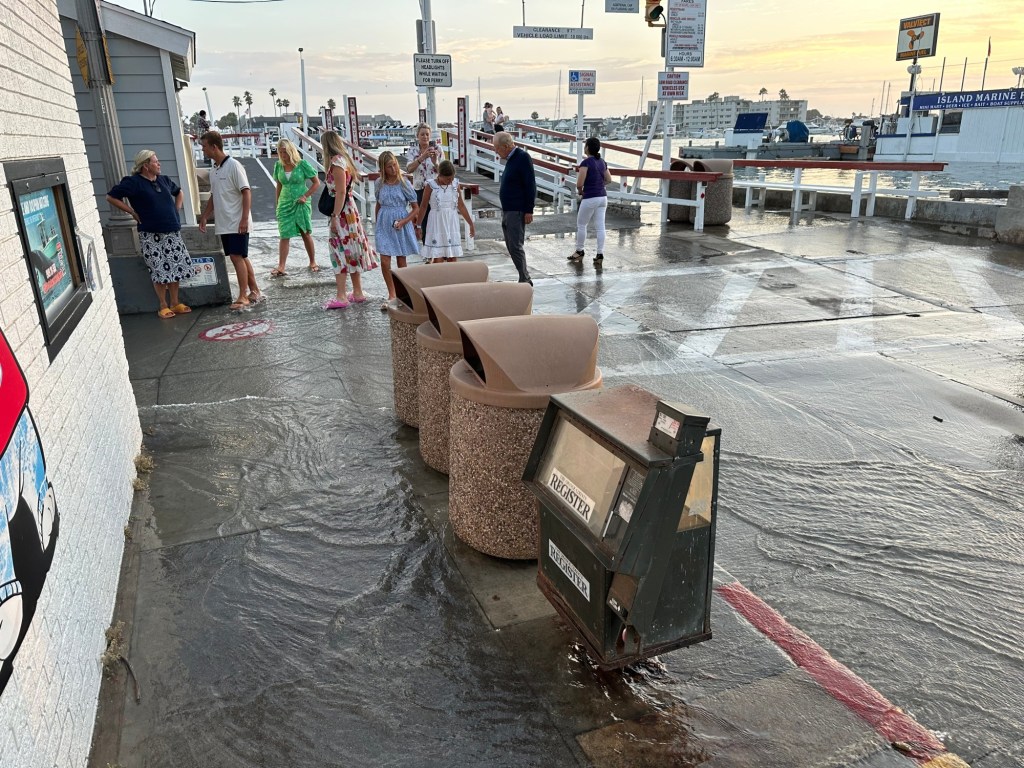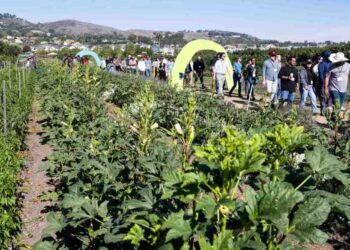For the last two nights, Newport Beach streets have been soaked.
High tides in the evening hours sent water spilling over from the harbor into streets on Balboa Island and the Peninsula on Sunday, July 30, and again in West Newport the next night.
Typically, extreme astronomical high tides are predictable. In winter, rains can cause water levels to rise to cause spillage. Sometimes, big swells can combine with tides to cause trouble.
But this is summer. The swell is small. And there’s no rain. So what gives?
El Nino is here.
Data dating back to El Nino events in 1997 and 2015 show water levels hitting 6 inches to nearly a foot higher than predicted tide levels. And with extremely warm water in recent weeks, it seems the latest El Nino’s coastal impacts of higher water levels are following that trend, said Brett Sanders, a coastal engineering expert at UC Irvine.
And it could be a glimpse into the future, he said.
“There’s a higher likelihood of overtopping of beaches, flood walls and harbors and it’s also a predictor of the future we face when mean sea levels rise 6 inches,” he said. “The water levels we’ll see for the next few months potentially will be elevated in a way future sea level rise will be like on a regular basis.”
In Newport Beach, more than 30 valves have to be turned during high tide to keep bay water from breaching the land. On Sunday, the tides were higher than expected and some streets began to take on water, prompting workers to pump it back out to sea, said city spokesperson John Pope.
That’s about when photographer Mark Girardeau, just getting off a Newport Coastal Adventure excursion, had to wade through ankle-deep water on Balboa Island to get back to his car after getting off the ferry.
“You had no choice but to walk through the salt water,” he said. “I didn’t realize it was going to be that intense.”
Neither did city workers, who faced even more flooding the following night. The tides were…
Read the full article here






